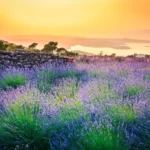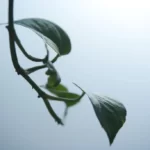Cabbage is a versatile and nutritious vegetable that often finds its way into a variety of meals, from hearty soups to crunchy coleslaw. To make the most of this vegetable in your cooking, it’s important to be able to distinguish between fresh cabbage and cabbage that has gone bad. In this guide, we’ll delve into the art of recognizing the signs of cabbage freshness and spoilage. By the end, you’ll be equipped with the knowledge to ensure that the cabbage you use is at its best.
- fresh from florida
- green cabbage
- fresh produce
Inspect the Outer Leaves
The outer leaves of cabbage offer valuable insights into the overall freshness of this vegetable. Here’s what to look for:
- Fresh Cabbage: When examining a cabbage, start with the outer leaves. They should be crisp, vibrant green, and free from any noticeable blemishes or discoloration.
- Spoiled Cabbage: If the outer leaves appear wilted, discolored, or show signs of mold or mildew, these are clear indicators that the cabbage has gone bad and should be discarded.
Understanding how to assess cabbage based on its outer leaves is your first step toward ensuring you use the freshest and most delicious cabbage in your culinary creations.
Check for Firmness
The firmness of cabbage is a reliable indicator of its freshness. Follow these steps to gauge the cabbage’s firmness:
- Fresh Cabbage: A good cabbage should feel solid and heavy when you gently squeeze it. It should offer resistance and not yield to pressure easily.
- Spoiled Cabbage: If the cabbage feels soft, mushy, or spongy when you touch it, it’s a sign of decay and spoilage. Such cabbage is no longer suitable for consumption.
Examine the Cut Ends
Inspecting the cut ends of cabbage can provide further clues about its condition:
- Fresh Cabbage: The cut ends should be clean, moist, and free from discoloration. Moisture at the cut ends is a good sign of freshness.
- Spoiled Cabbage: If the cut ends appear dry, brown, or emit an unpleasant odor, it’s a clear indication that the cabbage is past its prime and should be discarded.
By checking for firmness and examining the cut ends, you can gain a deeper understanding of the cabbage’s freshness and make informed decisions about its usability in your recipes.
Smell it
Your sense of smell can be a powerful tool in determining the freshness of cabbage. Here’s what to do:
- Fresh Cabbage: A fresh cabbage should emit a mild, slightly sweet aroma. It should be inviting and pleasant to smell.
- Spoiled Cabbage: If you detect a foul or sour odor when you bring the cabbage close to your nose, this is a clear sign that it has gone bad and should not be used.
Look for Signs of Insects or Damage
A thorough visual inspection can help you spot any signs of insects or damage on the cabbage:
- Fresh Cabbage: It should be free from holes, chew marks, or any visible signs of insect infestation. Fresh cabbage should also have smooth, unblemished leaves.
- Spoiled Cabbage: If you notice holes, chewed areas, or signs of insect activity, or if the leaves appear damaged or decayed, it’s best to discard the cabbage.
Conclusion
Being able to tell if cabbage is bad is a valuable skill that can help you maintain the quality of your meals and reduce food waste. By inspecting the outer leaves, checking for firmness, examining the cut ends, using your sense of smell, and looking for signs of insects or damage, you can confidently determine the freshness of cabbage in your kitchen. This knowledge ensures that you use only the finest cabbage in your culinary creations, whether it’s a crisp coleslaw or a hearty cabbage soup, allowing you to savor its flavor and nutritional benefits to the fullest.





